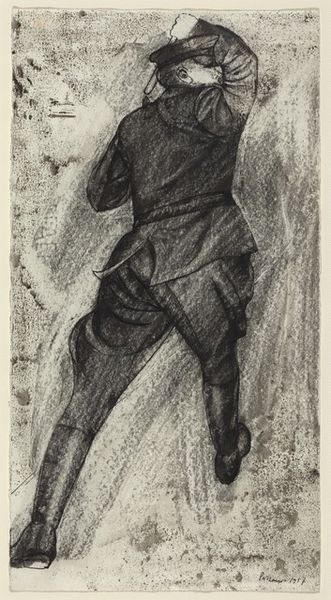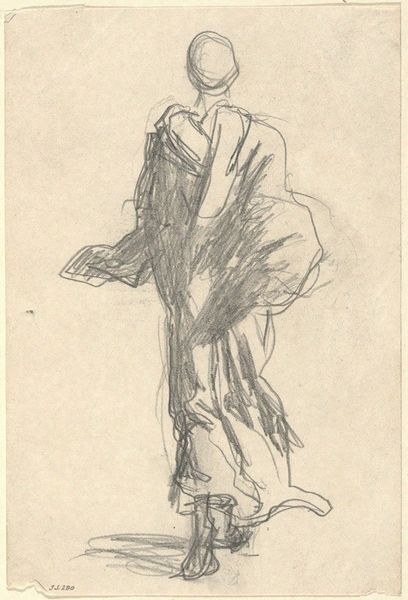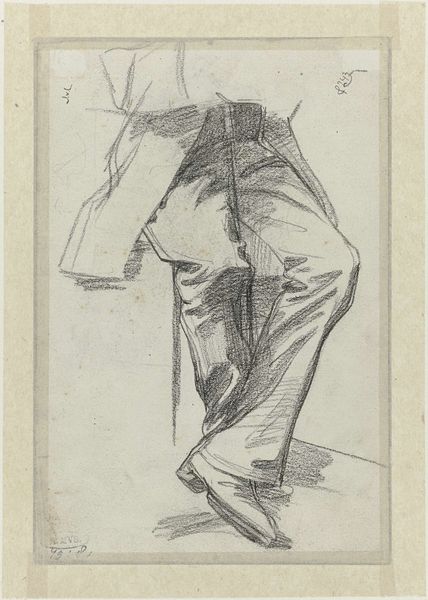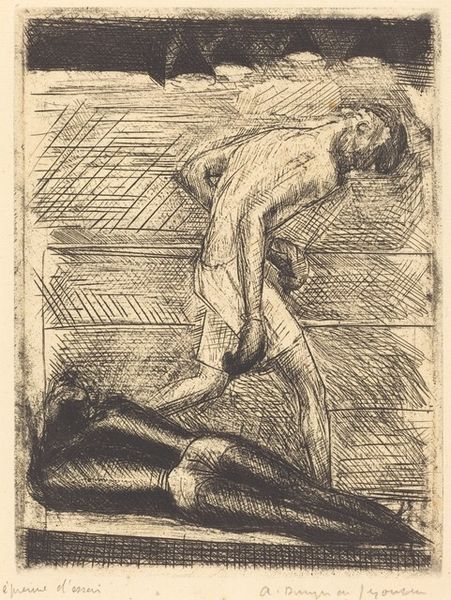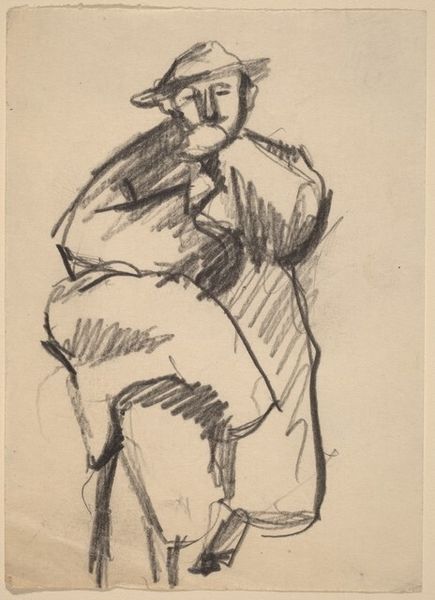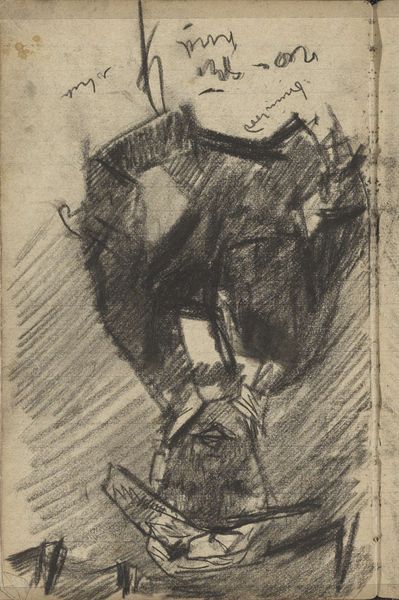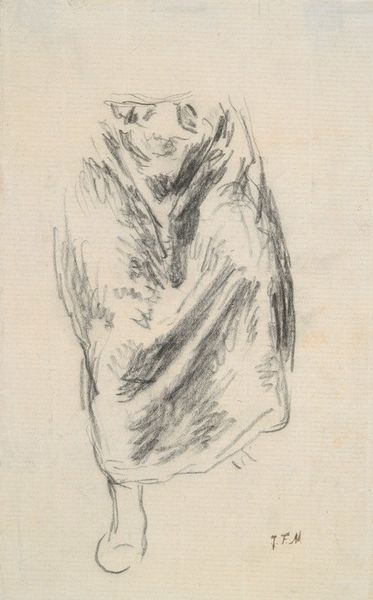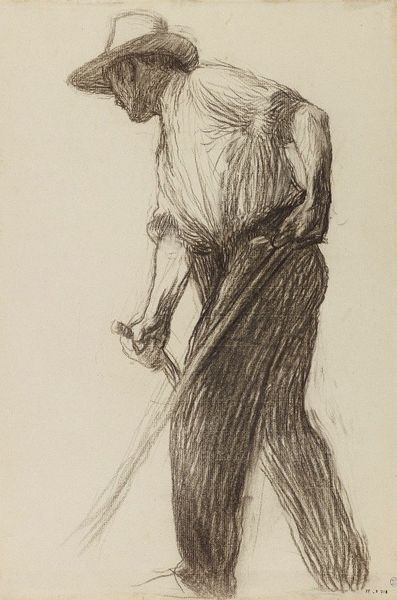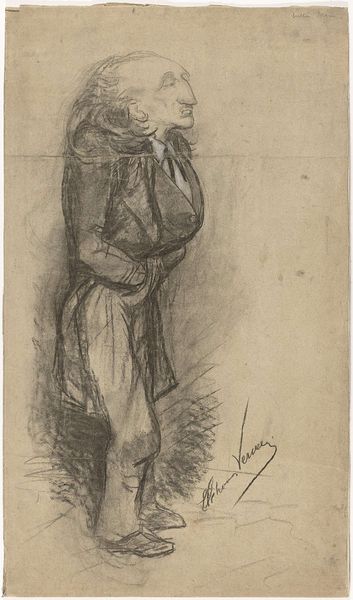
drawing, print, intaglio, charcoal
#
portrait
#
drawing
# print
#
intaglio
#
charcoal drawing
#
genre-painting
#
charcoal
#
realism
Copyright: National Gallery of Art: CC0 1.0
Editor: This is Edgar Chahine's "Sans Travail," created in 1903. It's a charcoal and intaglio print of a working-class man trudging down the street. The man's posture conveys a profound sense of weariness, almost defeat. What story do you think Chahine is trying to tell? Curator: The title "Sans Travail," meaning "without work" or "unemployed," is key. Chahine made this during a period of significant social upheaval and growing awareness of poverty. It’s not simply a portrait, but a commentary on the plight of the working class, a genre painting imbued with political messaging. Note the composition – the man is moving away, suggesting a lack of options, the direction he is going indicates futility and the heavy shadows, they seem to amplify the hopelessness. How might the setting of this figure—clearly an urban environment—further reinforce this idea? Editor: The setting seems very matter-of-fact, those tiled blocks are not romantic or in any way comforting. The man appears anonymous; he could be any working man down on his luck during the early 1900s. I wonder if that’s what Chahine wanted to express. Curator: Precisely. This anonymity invites the viewer to contemplate the systemic issues causing the man’s hardship. Consider how printmaking, as a medium, allowed for the wider dissemination of such images, democratizing access to social critique. Also, the use of charcoal; do you see the raw texture it provides that suggests immediacy and rawness? Editor: Yes, I see how the charcoal gives a certain immediacy to the drawing. It's rough, almost like it was quickly rendered to capture a fleeting moment, emphasizing the harsh realities it depicts. Curator: Right, Chahine used his art as a means of documenting and, implicitly, critiquing the societal forces at play, challenging viewers to confront uncomfortable truths. This piece, then, becomes more than just an image; it becomes a historical document reflecting socio-political realities. Editor: So it's not just about the man, but about the system that failed him. I never considered the public role of such a somber portrayal of working class. Thanks! Curator: Indeed! Art serves often as both a mirror and a call to action, which “Sans Travail” encapsulates with a somber profundity.
Comments
No comments
Be the first to comment and join the conversation on the ultimate creative platform.
